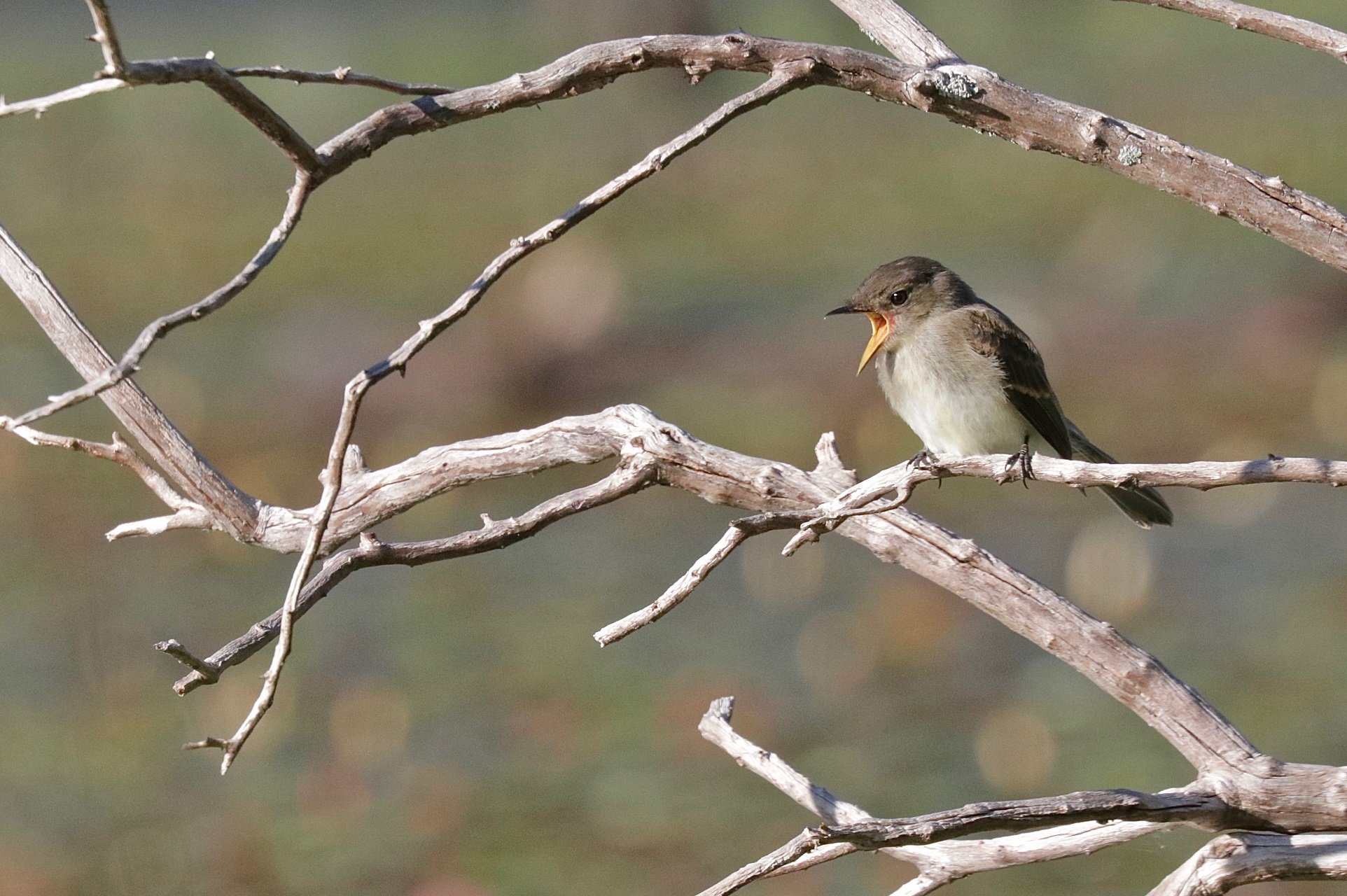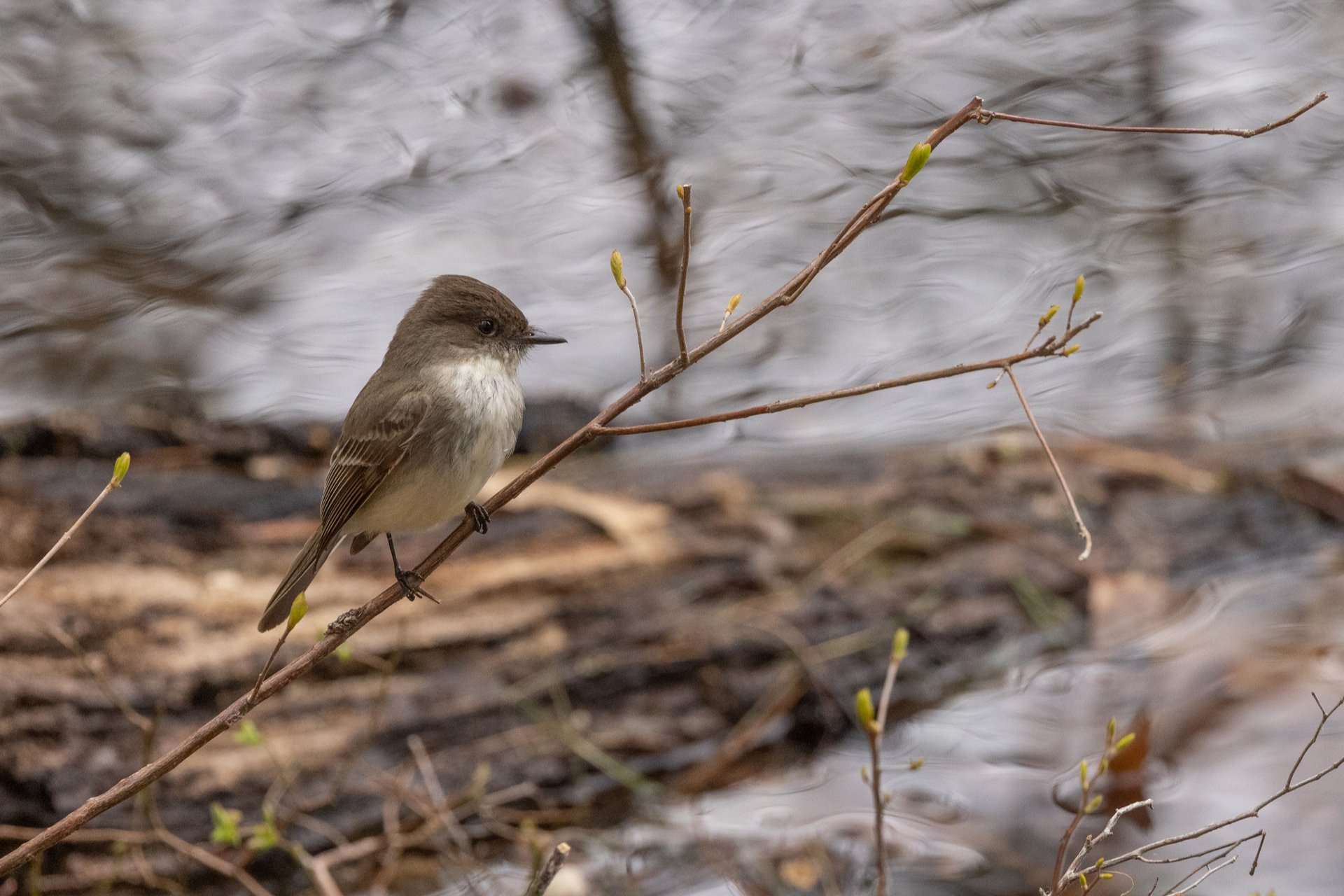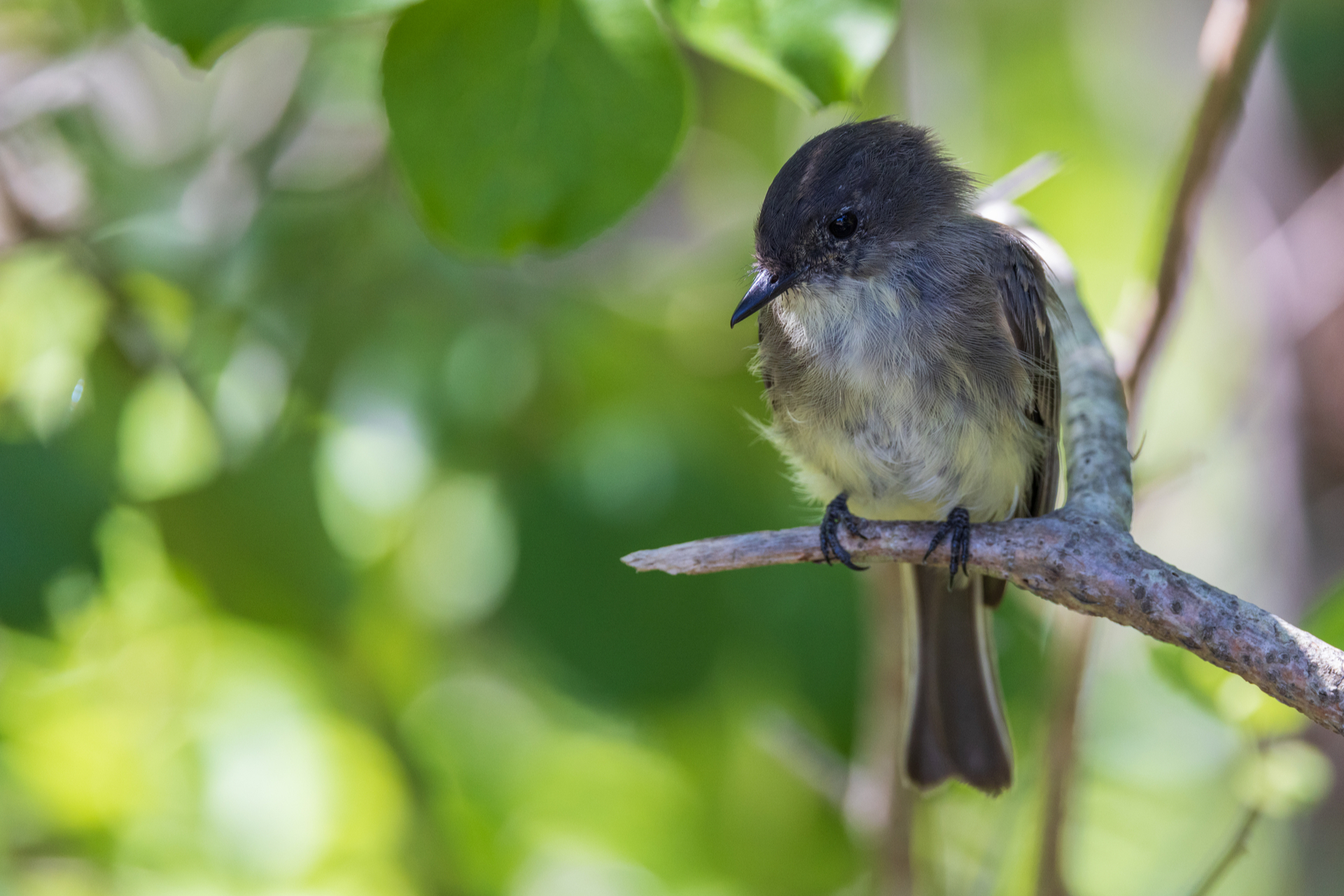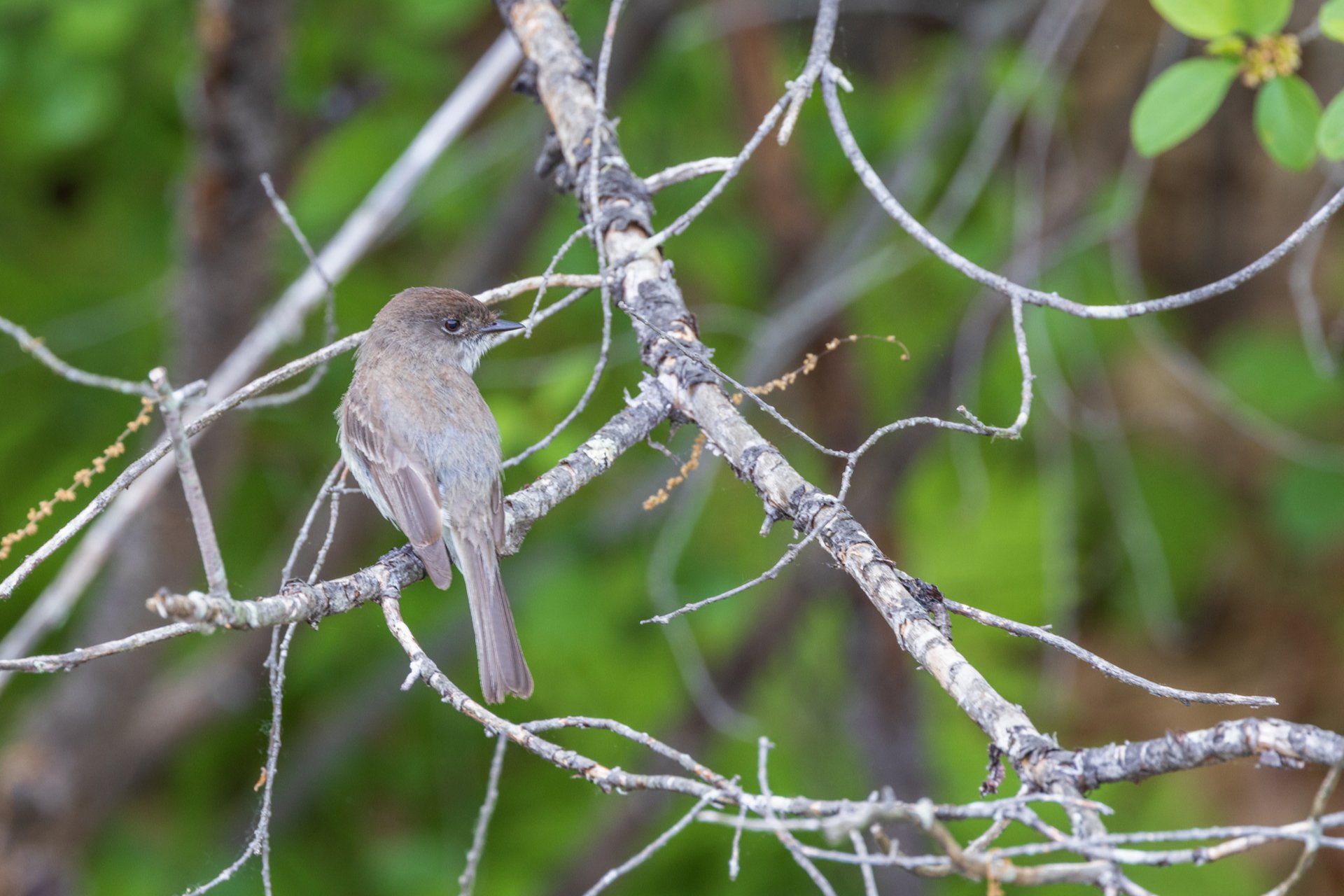Birds in Massachusetts
Eastern Phoebes
The most tame and well-known members of the flycatcher clan are the phoebes. Eastern Phoebes often choose to nest on or near human buildings, and so the lucky occupants are treated to frequent performances by these active foragers, watching them sally forth from a favored perch to snatch an insect out of the air and return in a flash.
How to Identify the Eastern Phoebe
Eastern Phoebes are distinctive in behavior but unremarkable in plumage. Males and females are both dark grey above and off-white below. Many birds show a faint wash of grey on either side of the breast. Phoebes are not large (about 7”), but their relatively long tails stand out while the birds are perched. Their bills are black and slender, quite unlike the seed-crushing bills of a finch or junco.
Eastern Phoebe Behavior
Eastern phoebes hunt flying insects by “sallying forth” in short flights from a favorite perch. This hunting strategy is easily recognized once seen; also recognizable is the phoebe’s habit of flicking its tail upward restlessly while perched. Phoebes will build their nests on window-ledges and above doorframes, so it’s not unusual to see them perched very near a house or shed.
The phoebe’s song is a sneezy two-note whistle frree-bee!, or a four-note frree-brrrr-eedit!
Eastern Phoebe Song
Eastern Phoebe Call
Where Can I See Eastern Phoebes?
Phoebes are stable or increasing as breeding birds in Massachusetts. They are seldom encountered during the winter, which they spend in the southeastern United States, but winter sightings are not unheard of.
How Mass Audubon is Supporting Birds in Massachusetts
Mass Audubon works at our wildlife sanctuaries and beyond to ensure that the nature of Massachusetts continues to thrive. By scientifically monitoring Massachusetts birdlife, Mass Audubon informs important conservation decisions and launches targeted initiatives to help at-risk species. In addition, fostering healthy habitats, supporting native species, and educating people about the importance of nature conservation is critical to our success. Learn more about our work
How You Can Support Birds in Massachusetts
Mass Audubon supports birds like the Eastern Phoebe every day, but we couldn’t do it without the support of our 160,000+ members.
Help support Eastern Phoebes, and birds like them, by becoming a member today.
Upcoming Bird Programs
Owls of Massachusetts: Behavior, Habitats, & Conservation
-
Online
-
Tuesday, January 20
7:00-8:30pm
Adults
Owls of Massachusetts Series
-
Online
-
3 classes starting
Tuesday, January 20
7:00-8:30pm
Adults
Birding by Van
-
North River Wildlife Sanctuary, Marshfield
-
Wednesday, January 21
8:30-11:00am
Adults
Stay Connected
Don't miss a beat on all the ways you can get outdoors, celebrate nature, and get involved.






